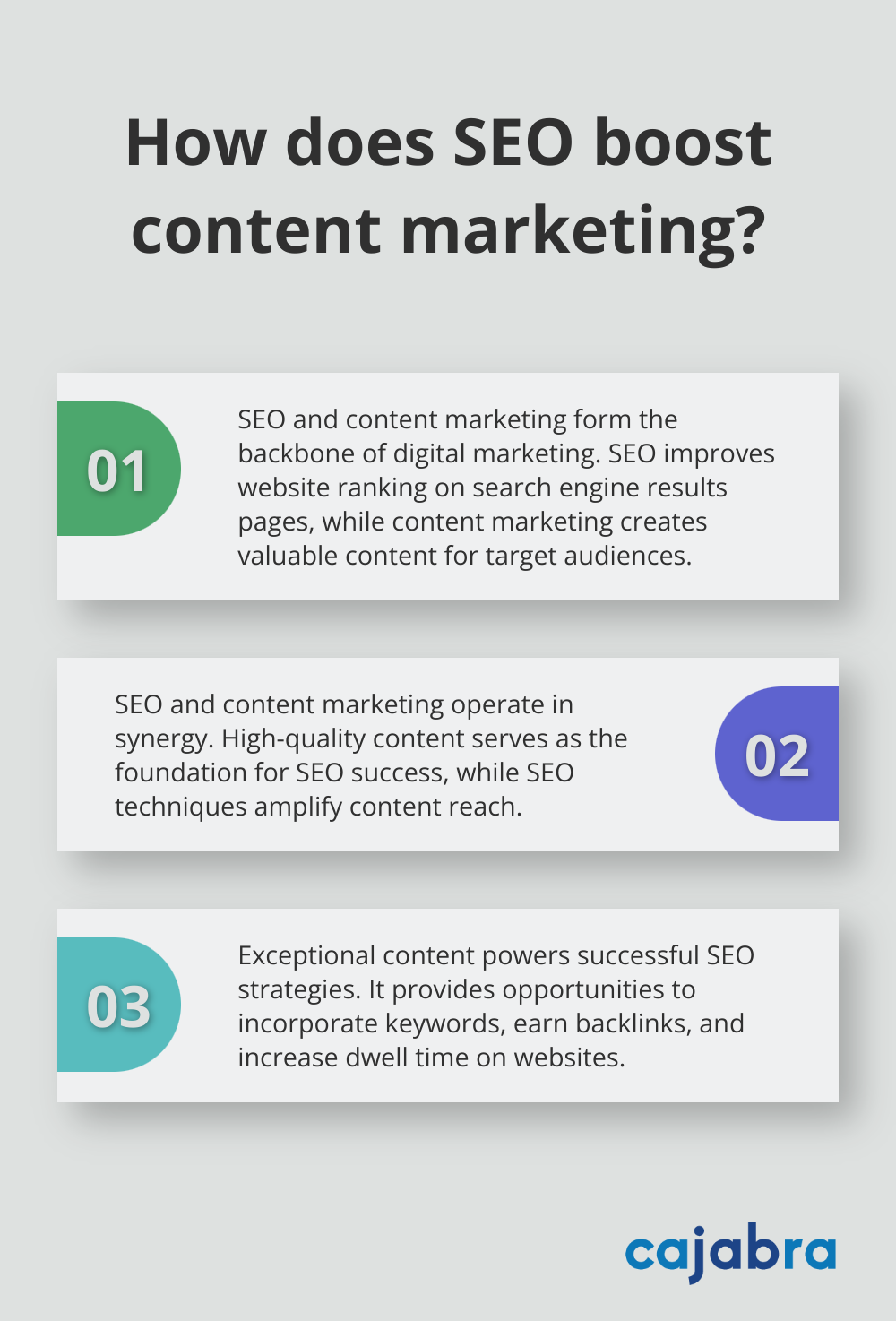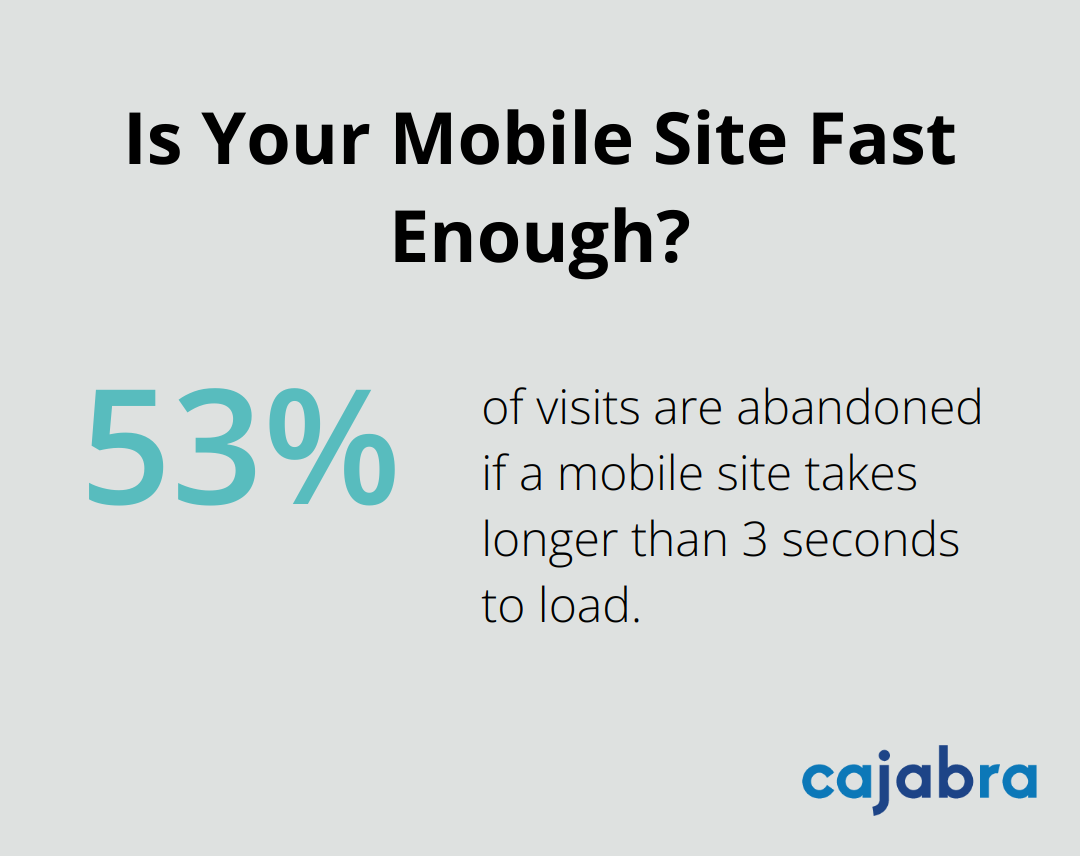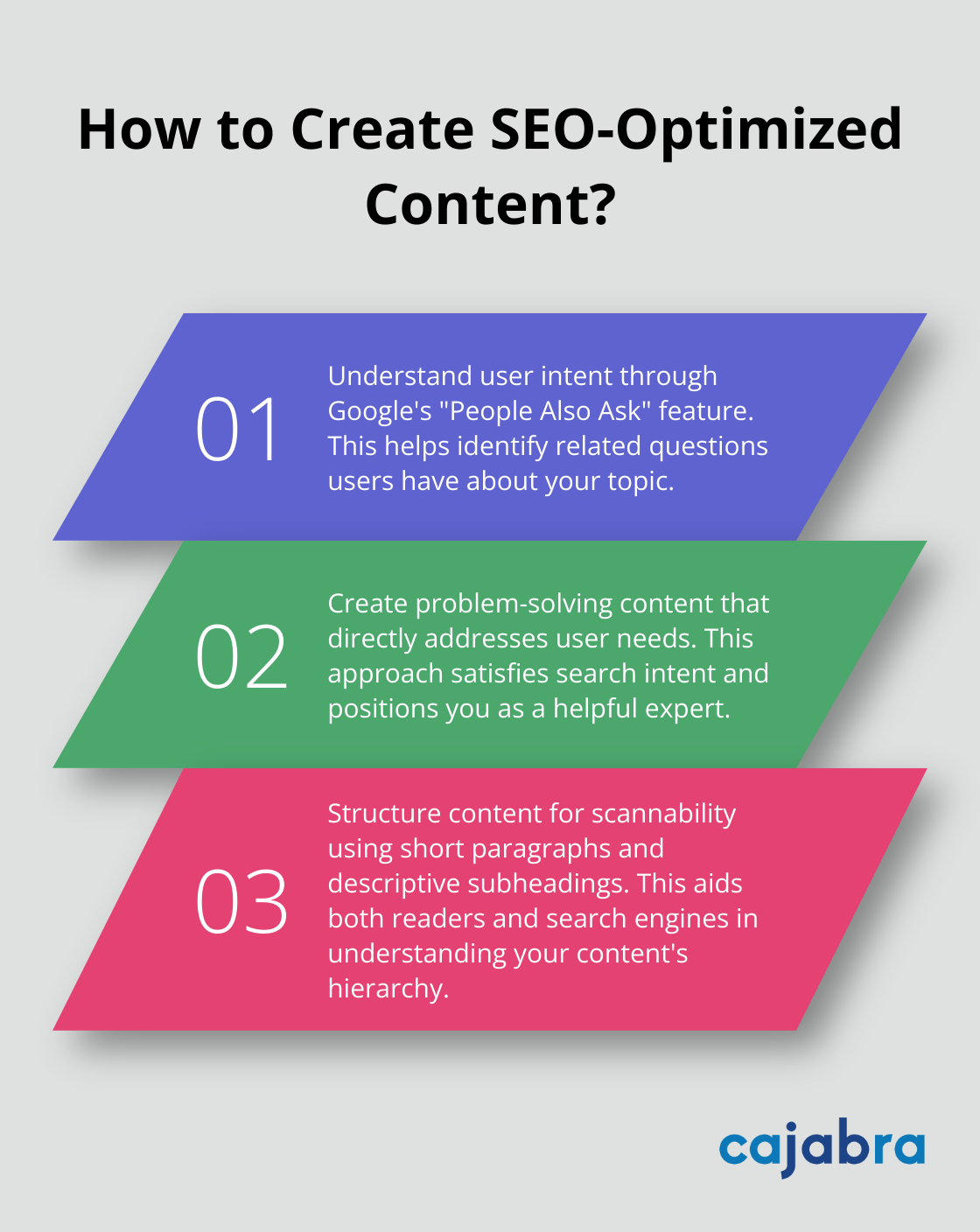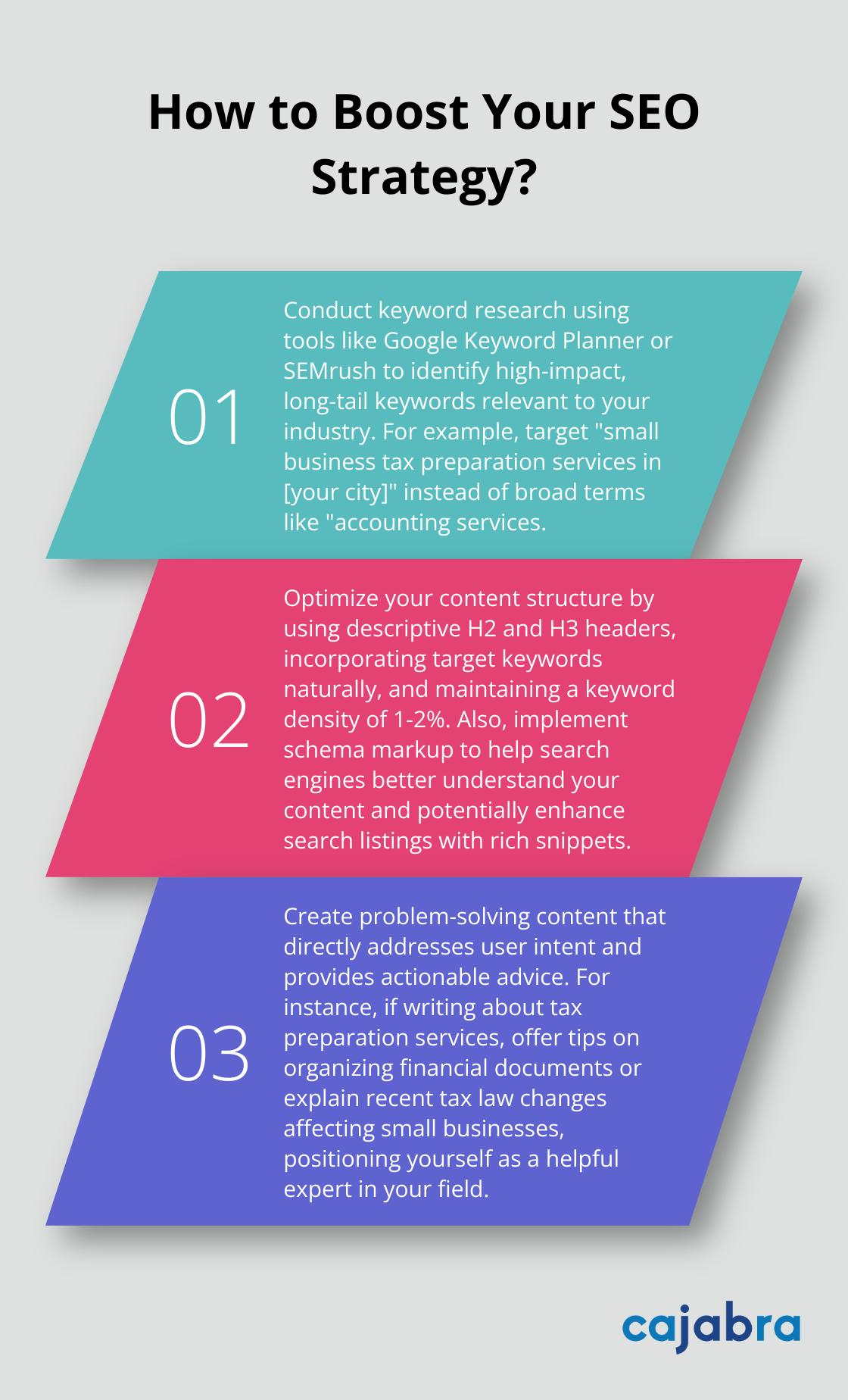
At Cajabra, LLC, we've seen firsthand how content marketing and search engine optimization work together to boost online visibility.
These two strategies form a powerful alliance, each enhancing the effectiveness of the other.
In this post, we'll explore how to leverage both SEO and content marketing to drive traffic, engage audiences, and achieve your business goals.
SEO and content marketing form the backbone of effective digital marketing strategies. SEO involves optimizing a website to improve its ranking on search engine results pages (SERPs), which can help increase your reach to potential customers. Content marketing creates and distributes valuable, relevant content to attract and engage target audiences.
SEO and content marketing operate in perfect synergy. High-quality content serves as the foundation for SEO success, while SEO techniques amplify content reach. A Semrush study revealed 106 of the most up-to-date, verified SEO statistics that can be used to dictate strategy and enhance content marketing efforts.
Exceptional content powers successful SEO strategies. It provides natural opportunities to incorporate keywords, earn backlinks, and increase dwell time on your site.
SEO techniques boost your content's visibility to a wider audience. Optimizing for relevant keywords and improving technical aspects of your site increases the chances of your content appearing in search results when your target audience seeks information.
An integrated approach to SEO and content marketing yields superior results compared to pursuing them separately. This holistic strategy ensures that your content not only provides value to your audience but also aligns with search engine requirements. The result? Higher rankings, increased organic traffic, and improved engagement metrics.

As we move forward, we'll explore the key SEO strategies that can supercharge your content marketing efforts. These tactics will help you create a powerful, unified approach that drives traffic, engages audiences, and achieves your business objectives.
Identify the competitive keywords that your target audience actively searches for. Tools like Google Keyword Planner or SEMrush help find relevant terms with high search volume and manageable competition. Focus on long-tail keywords, which are more specific and often have higher conversion rates. For example, instead of targeting "accounting services," try "small business tax preparation services in [your city]."
Structure your content to make it easily digestible for both readers and search engines. Use descriptive H2 and H3 headers to break up your text and signal the main topics to search engines. Incorporate your target keywords naturally into these headers, the first paragraph, and throughout the body of your content. Try to maintain a keyword density of about 1-2% (without resorting to keyword stuffing).
Technical SEO ensures your content is easily crawlable and indexable by search engines. Optimize your meta titles and descriptions, using your primary keyword and creating compelling copy that encourages clicks. Ensure your website loads quickly – 53% of visits are abandoned if a mobile site takes longer than 3 seconds to load. Implement schema markup to help search engines understand your content better and potentially enhance your search listings with rich snippets.
Quality backlinks remain a key ranking factor. Develop a link-building strategy that focuses on earning links from reputable, relevant websites. Create valuable, shareable content that naturally attracts links. Guest posting on industry-leading blogs can also effectively build authoritative backlinks. Prioritize quality over quantity – one link from a highly respected site in your industry can outweigh dozens from low-quality sources.
For businesses with a physical presence or serving specific geographic areas (like many accounting firms), local SEO tactics are essential. Claim and optimize your Google My Business listing, ensure consistent NAP (Name, Address, Phone number) information across all online directories, and encourage satisfied clients to leave reviews on Google and other relevant platforms.

Now that we've covered the key SEO strategies for content success, let's explore how to create SEO-friendly content that resonates with both search engines and your target audience. Remember to focus on customer, cost, convenience, and communication to enhance your overall digital marketing strategy.
Understanding what your audience seeks when they type a search query forms the foundation of effective content creation. Does your audience want information, intend to make a purchase, or search for a specific website? Google's "People Also Ask" feature provides valuable insights into related questions users have about your topic. For instance, if you write about tax preparation services, users might also inquire about deduction limits or filing deadlines.
After you identify user intent, create content that directly addresses those needs. An accounting firm writing about tax preparation shouldn't just list services. Instead, it should provide actionable advice on organizing financial documents or explain recent tax law changes that affect small businesses. This approach satisfies search intent and positions you as a helpful expert in your field.
Most online readers scan content before deciding to read in-depth. Use short paragraphs, descriptive subheadings, and bullet points to make your content easy to digest. This structure also helps search engines understand your content's hierarchy and main points. For example, if you explain the steps of a tax audit, use clear subheadings for each stage of the process.
Incorporate relevant images, videos, or infographics to illustrate complex concepts and break up text. For accounting content, you might include charts showing tax bracket changes or videos explaining how to use accounting software.
Your primary goal should be to provide genuine value to your readers. Try to create high-quality, informative content that addresses real user needs. This approach will naturally improve your search rankings while building trust with your audience. It aligns perfectly with the mission to differentiate accounting firms through strong brand identity and effective lead generation (a strategy that Cajabra, LLC excels at implementing for its clients).

Content marketing and search engine optimization create a powerful synergy that propels businesses to new heights of online visibility and success. This integrated approach enhances search engine rankings and delivers valuable content that resonates with target audiences, fostering trust and credibility. As search algorithms evolve to prioritize user experience and content quality, businesses that consistently produce optimized, high-value content will maintain a competitive edge.

We at Cajabra, LLC have witnessed the transformative impact of merging content marketing and SEO strategies for accounting firms. Our specialized JAB System™ helps accountants secure retainer-based clients and maximize their online visibility. This approach enables accounting firms to differentiate themselves in a crowded market, attract ideal clients, and position themselves as industry leaders.
The time to act is now. Embrace the power of content marketing and search engine optimization to elevate your online presence, engage your target audience, and drive sustainable business growth. With a strategic, integrated approach, you'll improve your search rankings and build lasting relationships with your clients (setting the stage for long-term success in the digital landscape).



